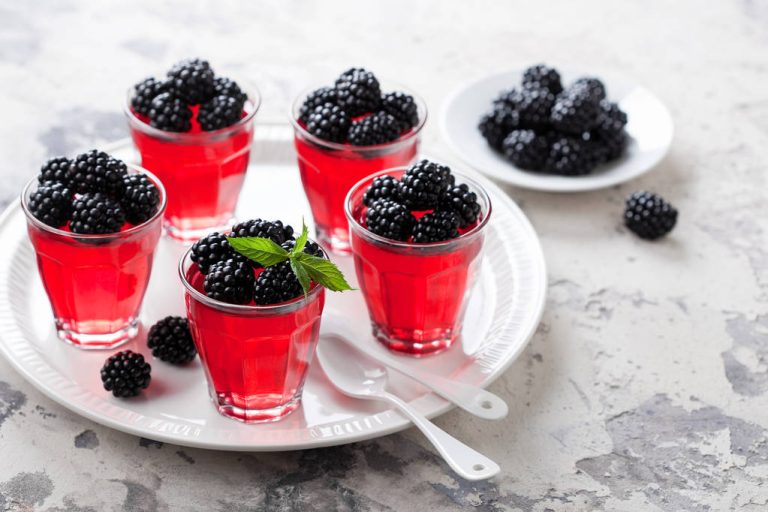As a vegan or vegetarian, you can use gelatin substitutes for desserts, sauces and cakes. You can find the best alternatives here.

Gelatine is used in the food industry to bind liquids and create a creamy to firm consistency. For this reason, the gelling agent is used particularly in sweets, desserts, dairy products or sauces and soups. But juices, wines or medicines can also be made with gelatine.
Conventional gelatin is a by-product of slaughter. It consists mainly of collagen, which is found in skin, bones and nails. The remains of cattle or pigs are often used for this. But poultry or fish are also used for gelatine production.
Gelatine is therefore taboo for vegans and vegetarians. You don’t have to do without delicious desserts & co. Because there are herbal alternatives as a gelatine substitute that work very well.
Gelatin substitute: These are the vegan alternatives
Agar Agar is a vegetable gelling agent and consists of dried seaweed. The vegan gelatine substitute is available as a powder or flakes. Agar Agar is tasteless and rich in minerals and fiber. Before use, it must be heated or soaked in water. The end result is slightly firmer than regular gelatine.
Carrageenan is a gelatin substitute made from red algae. It binds liquid and is particularly used as a thickening agent. Since it stays a little more liquid, it is more likely to be used for jellies or in cosmetics. Carrageenan is suspected of causing allergic reactions, so it should be used with caution.
Guar gum is obtained from the seeds of the guar plant and is also considered a vegan gelatine substitute. It binds the liquid during preparation and is particularly suitable for preparing ice cream, creamy dishes or jams.
Potato or corn starch can also be used as a gelatin substitute. The starch has to be heated beforehand and can then be used as a binding agent. Vegetable starch is used in cakes, soups and sauces, among other things. You can find the vegan gelling agent in organic quality in health food stores.
Pectin is mainly obtained from the cell walls of leftover apples or lemons and is therefore rich in dietary fibre. It has no taste of its own and is particularly suitable for making jam, as the pectin gels particularly well with sugar and lemon juice.

